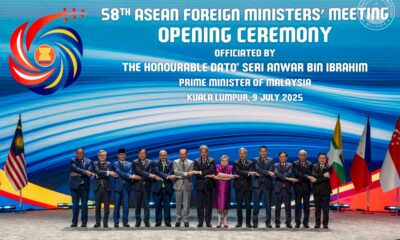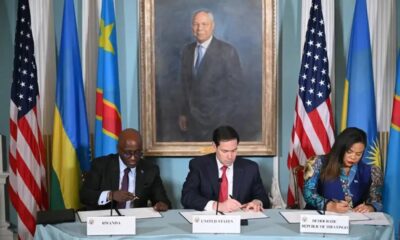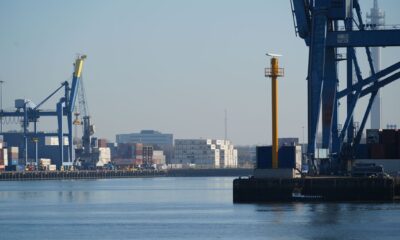Asia
Türkiye’s BRICS bid discussed at Shanghai University
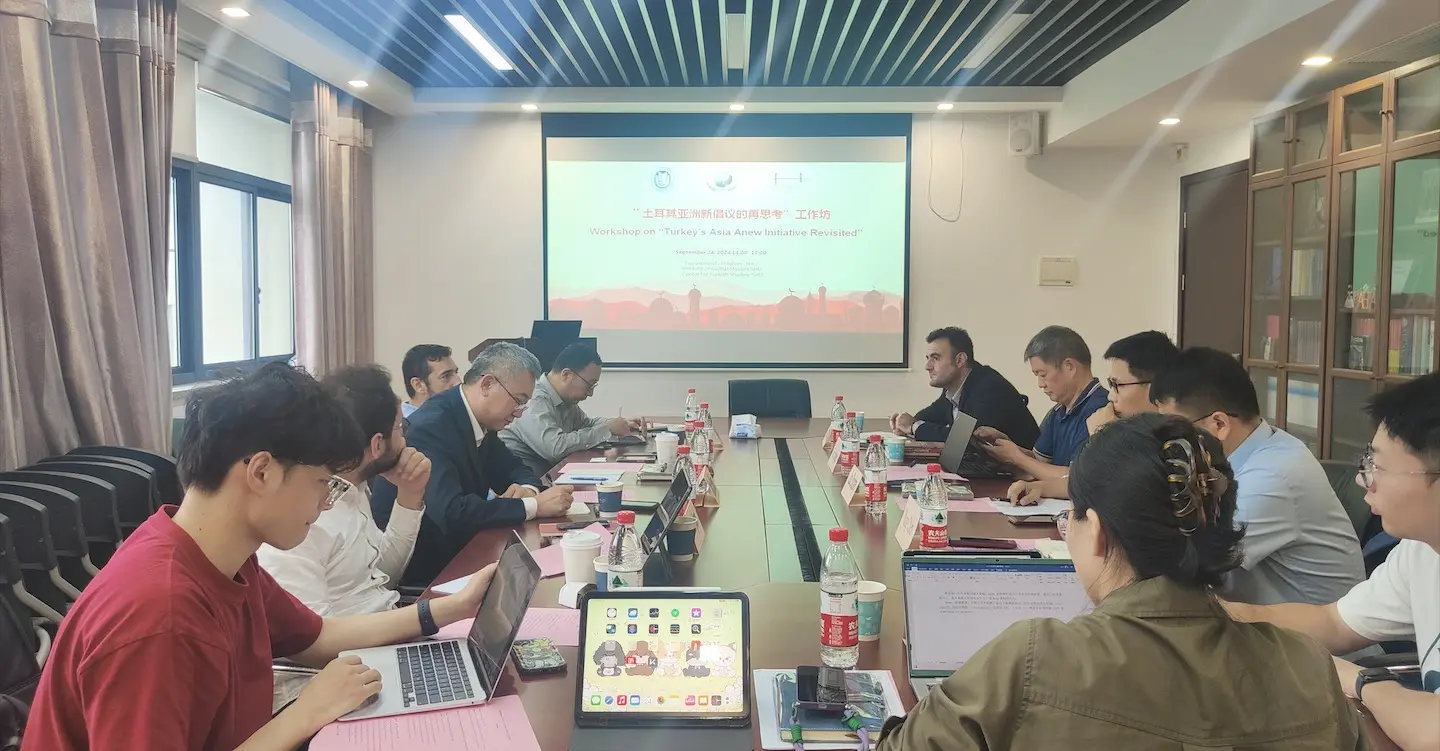
On 24 September, the Institute of Global Studies of Shanghai University organised a workshop on ‘Türkiye’s Re-Asia Initiative’.
Moderated by Prof. Guo Changgang, Director of the Centre for Turkish Studies at Shanghai University, the workshop discussed China and Türkiye’s foreign policies, the rising global South, the BRICS agenda and Türkiye’s membership bid.
Opening the event, Prof. Guo Changgang said: “As Ankara is applying to join BRICS, it is a good time to talk about Türkiye’s Asia policy,” highlighting the Re-Asia Initiative.
“Türkiye’s efforts to join the Shanghai Cooperation Organisation (SCO) and participate in ASEAN show that Türkiye has adopted a ‘pendulum’ position between the West and the East,” said Prof. Dr. Gürol Baba of Ankara Social Sciences University. Gürol Baba said Türkiye’s move to join BRICS will make it a more ‘visible’ actor in the region: “Türkiye is an active middle power. It should cooperate with like-minded powers. For example, Türkiye is a founding member of the MIKTA group. BRICS is also a place where Türkiye can find like-minded countries. Baba said Türkiye wanted to keep East and West together in its foreign policy.
Prof Zou Zhigiang of Fudan University said: ‘Türkiye is changing its Asia policy. This is because an Asia that is economically and technologically confident, competitive and rising in every sense cannot be ignored. Türkiye is currently seeking to increase its engagement in the region. President Erdoğan attended the Shanghai Cooperation Organisation summit in 2022 for the first time as a NATO country. It has also been confirmed that Türkiye has applied to join BRICS,” he said. Prof Zou summed up why Türkiye attaches such importance to Asia in 4 points:
-
Accumulated frustration with the West and the European Union. It is now clear that Türkiye’s EU membership will not happen in the near future.
-
Türkiye is seeking strategic autonomy. It wants to be a central power in the world and pursue a balanced policy. It wants to be a centre between East and West and not give up its NATO membership.
-
The growing global influence and attractiveness of the SCO and BRICS.
-
Türkiye’s domestic economy faces challenges. New economic markets and capital inflows are vital for Türkiye.
Prof Zhou Shixin of the Shanghai Institute of International Studies commented on China’s Asia policy:
“China is seen by the US as the biggest threat, so it is blocked and ostracised by the US and some of its allies. China-US relations are one of the most important factors driving the regional power shift and order transition in the Asia-Pacific. China is expanding its presence and increasing its influence in the Asia-Pacific. China is acting as a modern and sovereign country, making great efforts to defend its territorial integrity and sovereign independence and to achieve national reunification. China also seeks peaceful and equal coexistence and interaction with the US, but does not seek to coerce the US. China seeks to strengthen security and economic relations with more regional countries on the basis of the principles of ‘friendship, sincerity, mutual benefit and inclusiveness’. China seeks to manage and resolve territorial disputes with its neighbours primarily through bilateral diplomatic consultations and negotiations”.
Commenting on Türkiye’s Asia Re-entry Initiative, Prof. Zhou said that Ankara has demonstrated its willingness to pursue a multi-dimensional foreign policy based on the Strategic Depth Doctrine and made the following suggestions: “Türkiye can focus more on Southeast Asia rather than South Asia and Northeast Asia, Türkiye can interact with Asia-Pacific countries as a sovereign country, not as a NATO member, even with Japan and South Korea. Türkiye could promote more economic cooperation rather than security cooperation, Türkiye could apply to join the ASEAN Regional Forum as an Asian country, and Türkiye could negotiate more free trade agreements with Asia-Pacific countries beyond South Korea (1 May 2013), Malaysia (1 August 2015) and Singapore (1 October 2017) before joining the EU. As a result, China is willing to help Türkiye further coordinate with some regional countries.”
Prof Zhou Yiqi of the Shanghai Institute of International Studies spoke about China’s Middle East policy:
“There are four major parties in the Middle East: Arab countries, Israel, Iran and Türkiye. China has strengthened its relations with most of the major powers there. However, Türkiye remains the only party that has not yet signed a partnership agreement with China. Diplomatic relations between the two: Strategic Cooperation Relations. Although relations between China and Israel are rather poor, there is still a relationship of innovative partnership. In addition, China has successfully negotiated the conflict between Iran and Saudi Arabia. China’s partnership between these two countries has become a bridge that brings them together.
The traditional stereotype is that China is only interested in economic issues and is a free rider on security in the region. However, after its mediation between Iran and Saudi Arabia and its efforts to bring peace to Gaza, China has become an active player in Middle East security issues. However, this still differs from US efforts to use the alliance as a bargaining chip. China has always been quite fair in the Middle East, which has earned it trust. But it is also on the side of justice, for example on the Palestinian issue.”
Commenting on Türkiye’s Re-Asia Initiative, Prof. Zhou Yiqi said: “I think it is important for Türkiye to improve its relations with China, because China-Türkiye relations are even weaker than China-Israel relations. China is looking for stability in the face of apparent uncertainty. But I don’t understand why the foreign minister went back to Türkiye and suddenly raised taxes on electric cars imported from China. Such issues have become a hot topic on Chinese social media and this is definitely not positive for people-to-people understanding,” he said.
Dr Selçuk Aydın of Boğaziçi University commented on Türkiye’s relations with Asia:
“The origins of modern Türkiye go back to the early 19th century. The biggest event of that period was the abolition of the Janissaries. In other words, while the Ottoman Empire was undergoing a transformation, this process was expressed with a ‘new’ term. If we look back to the 1920s, there were again discussions about ‘New Türkiye’. When Erdoğan came to power, all the news was about ‘New Türkiye’. In fact, Asia is nothing new for Türkiye; it already has historical, cultural and religious links. I think Dr Serdar has been working on Uighur and Xinjiang issues. Historically, this region has been very connected and interacted with Türkiye.
Secondly, Türkiye’s participation in the Belt and Road Initiative is a great initiative. There is a mystery in Türkiye about China and in China about Türkiye. How is Türkiye perceived? For China, the concept of Türkiye is probably limited to NATO. Then there is the Xinjiang issue. There are two important issues that hinder Türkiye’s cooperation with China.
The first step we need to discuss is Türkiye’s dissatisfaction with what the US is forcing it to do in the Middle East. Especially the Syria incident. That was a turning point in diplomacy. Another example is the FETO case. Gulen had a close relationship with the US and there was a coup attempt. After this incident, Türkiye’s diplomatic direction changed. After the Arab Spring, Türkiye realised that the US did not support liberal movements in the Middle East, but only focused on its own interests. Subsequently, Türkiye became more involved in Middle Eastern affairs, for example by mobilising its military abroad in Syria, Azerbaijan and elsewhere.
We need to analyse Türkiye’s foreign policy from these perspectives. First, history, which is also intertwined with religion. The Ottoman Empire was the centre of the Caliphate. The second is the racial dimension, which also bears traces of the late Ottoman Empire. Turkish consulates are therefore the main pillar of Turkish foreign policy. The third pillar of Turkish policy is the promotion of a non-Western approach. This is related to the foundations of modern Türkiye and is very anti-colonialist. At the same time, Türkiye is geographically close to Western countries and has historically cooperated with them.
Türkiye’s neighbours are often in civil war or conflict. So Türkiye has to look to Asia, because China has incredible lessons to teach in that region. China may be the only superpower that wants peace in the Middle East.”
Commenting on Türkiye-China relations, Dr Serdar Yurtçiçek said:
“Professor Yiqi mentioned that there are four important powers in the Middle East (Türkiye, Arabia, Iran and Israel) and although China has very good relations with three of them, it has not been able to improve its relations with Türkiye. The reason for this is the Uighur issue, as Selçuk mentioned earlier. Since 2016, I have been living in China and researching Türkiye’s China policy. During this time, I have met many Chinese academics and politicians. The conclusion I have drawn from my experience and research is that the most important issue between Türkiye and China is the Uyghur issue, and unless this issue is resolved, all other areas of cooperation cannot be built in a relationship of mutual trust. Last year, former ambassador Emin Önen said: ‘There is mutual understanding on 99 points in Türkiye-China relations, but let’s not agree on one point. This should not hinder the development of bilateral relations’. Prof. Yang Chen said that China wants to improve its relations with Türkiye, but this point is as important as the other 99 points and the two countries should keep their mutual promises. That point is the Uighur issue. And it is clear that Turkish academics and politicians do not understand how important the Xinjiang issue is for China and that it is a non-negotiable issue in terms of national sovereignty.
After the Second World War, Turkish-Chinese relations developed largely within the foreign policy boundaries drawn by the United States. In particular, the fight against China in the Korean Civil War and Türkiye’s eventual accession to NATO led to Uighur figures such as Isa Yusuf Alptekin and Mehmet Emin Buğra defecting to Türkiye, making Türkiye a centre for anti-China Uighur separatist organisations. Even diplomatic relations between Türkiye and China only started after the US established diplomatic relations with China.
The situation was no different before the Second World War. Türkiye prioritised its friendship with the Soviets in its foreign policy and was wary of taking any steps that might anger the Soviets. For example, in 1944, Türkiye and the Republic of China almost signed a treaty of friendship, but Türkiye cancelled the treaty at the last minute so as not to anger the Soviets. This was because Türkiye had serious problems with the Soviets, especially the issue of the Straits Convention. The situation was similar in China. Xinjiang was largely under Soviet control. According to a Turkish diplomat, if a Chinese official wanted to go to Xinjiang, he first had to get permission from the Soviet consul in Kashgar.
Today, for the first time, there is a possibility of strategic relations between China and Türkiye without the shadow of a third country. Türkiye’s application for BRICS membership should be seen in this context.”
Asia
ASEAN and China deepen ties amid threat of new US tariffs
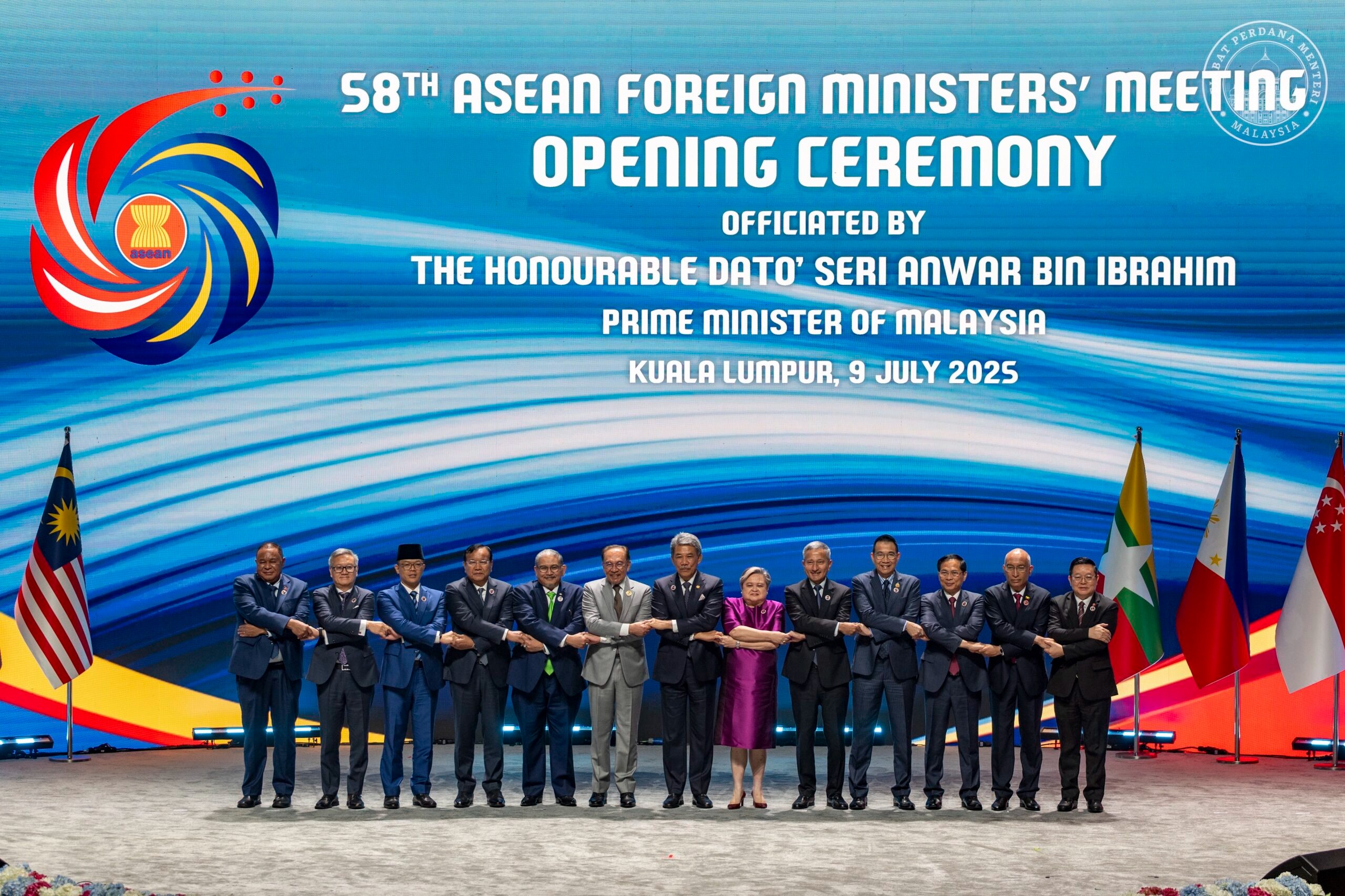
On Thursday, ASEAN foreign ministers emphasized the strength of the bloc’s relationship with China as they sought to deepen ties with Beijing in the face of new “reciprocal” punitive tariffs threatened by US President Donald Trump. Experts believe Trump’s aggressive tariff policy is bringing ASEAN and China even closer.
In his opening speech at a meeting in Kuala Lumpur with ASEAN foreign ministers and their Chinese counterpart, Wang Yi, Malaysian Foreign Minister Mohamad Hasan said that China is “one of ASEAN’s most important and dynamic partners.”
“This relationship is built on mutual trust, common interests, and growing economic interdependence,” he said.
Wang echoed these sentiments, emphasizing the countries’ shared Asian identity and goals. “China has always seen ASEAN as a priority in its neighborhood diplomacy and sees the region as a pioneer in building a global community with a shared future for humanity,” he said.
The meeting was part of the annual Ministerial Conference of ASEAN foreign ministers. Following the meeting, there will be meetings with Japan, China, and South Korea, as well as with US Secretary of State Marco Rubio and other dialogue partners.
Addressing the ongoing geopolitical shifts, Wang noted that the current global turmoil and transformation raise questions of unity or division, peace or conflict, and cooperation or confrontation.
“We must learn from history, actively promote an equal and structured world order, and push the international system toward greater justice and equality by supporting inclusive and shared economic globalization,” he said.
Trade relations
Since 2020, ASEAN and China have remained each other’s largest trading partners, with total trade volume reaching $770.9 billion in 2024, a 10.6% increase from the previous year.
In May, the two sides announced the ASEAN-China Free Trade Area (ACFTA) 3.0 agreement after nine rounds of negotiations spanning two and a half years.
The upgraded agreement includes nine new chapters covering the digital economy, green economy, and supply chain connectivity. China’s Ministry of Commerce described this framework as a gateway to building the China-ASEAN mega-market.
Meanwhile, ASEAN members are preparing for new US tariffs set to take effect on August 1. The tariffs are set at 40% for Myanmar and Laos, 36% for Cambodia and Thailand, 32% for Indonesia, 25% for Malaysia and Brunei, and 20% for Vietnam and the Philippines. Washington has not yet announced an updated rate for Singapore, which was taxed at a 10% rate when the tariffs were announced in April.
Response to tariffs
On Wednesday, at the start of the ASEAN foreign ministers’ meeting, Malaysian Prime Minister Anwar Ibrahim stated that trade is being used as a tool for “pressure, isolation, and control,” adding that “tariffs, export restrictions, and investment barriers have now become sharp instruments of geopolitical competition.”
In a speech to parliament on Wednesday, Indonesian Finance Minister Sri Mulyani called for multilateral institutions such as the World Trade Organization, the UN, and the World Bank to play a more significant role in the trade war. “The role of these multilateral institutions has been greatly weakened and is not even respected,” she said.
Thailand announced $1.22 billion in mitigation measures. According to Deputy Finance Minister Paopoom Rojanasakul, Thailand’s central bank is also expected to further loosen its monetary policy to reduce tariffs.
A draft of the joint communique from the foreign ministers’ meeting, seen by Nikkei Asia, describes unilateral tariffs as “counterproductive” and warns that they “risk exacerbating global economic fragmentation and posing complex challenges to ASEAN’s economic stability and growth.” The draft, expected to be released on Friday, affirms that ASEAN is “committed to working constructively with all partners to this end.”
Asia
Chinese navy chief and top nuclear scientist expelled from legislature

The chief of staff for the People’s Liberation Army (PLA) Navy, Vice Admiral Li Hanjun, and Liu Shipeng, the deputy chief engineer of the state-owned China National Nuclear Corporation, were removed from their positions in the country’s legislative body.
Li is the latest in a series of PLA generals and a handful of defense industry executives implicated in a widespread investigation within the military.
In a statement on Friday, the NPC Standing Committee announced, “The Navy Soldiers’ Congress has decided to remove Li Hanjun from his post as a representative to the 14th National People’s Congress.”
The Gansu People’s Congress also dismissed Liu Shipeng from his role as an NPC deputy.
Additionally, the Standing Committee revealed it had voted to remove Miao Hua, a former top general who previously oversaw the PLA’s ideological work, from the Central Military Commission (CMC), China’s highest military command body led by President Xi Jinping.
The removal of Li and Liu from their NPC memberships suggests they are facing serious disciplinary action.
China typically remains silent about purges within the military, and announcements from the NPC are one of the few indicators of such campaigns.
There is little public information available about Li and Liu, as both have worked in sensitive positions.
Before becoming the navy’s chief of staff, Li, 60, was the deputy director of the CMC’s Training and Administration Department. He was appointed to this role after serving for a year in the CMC’s Office for Reform and Organisational Structure.
In 2014, he was promoted to vice admiral upon his appointment as commander of the naval base in Fujian province, where Miao also spent a significant part of his career. At that time, he was the director of training at the China Naval Command College and was soon promoted to president of the school.
According to official media reports, nuclear scientist Liu was born into a family that “served China’s nuclear dream for three generations.”
As the deputy chief engineer at CNNC, which oversees all aspects of China’s civil and military nuclear programs, Liu also served as the Communist Party secretary and president of CNNC’s “404 base” in Gansu.
Covering an area of over 1,000 square kilometers, the base was established in 1958 and is the country’s first and largest nuclear research center. It played a crucial role in the development of China’s first atomic bomb in 1964 and its first hydrogen bomb three years later.
This secretive base is still considered a key hub for China’s nuclear deterrence and nuclear industry.
According to statements from provincial authorities, Liu was named “Gansu’s outstanding entrepreneur” in 2023.
Asia
China, US reach agreement on export controls

The Chinese Ministry of Commerce announced on Friday afternoon that Beijing and Washington have remained in close contact since the two-day trade talks in London earlier this month, confirming the details of a framework agreement.
“China will review and approve export applications for controlled items in accordance with its laws and regulations, and the US side will, in turn, lift a series of restrictive measures against China,” the ministry stated.
“We hope the US side will cooperate with China in line with the important consensus and conditions established during the conversation between the two presidents on June 5,” the statement continued.
On Thursday, US President Donald Trump said the US had “signed” a trade deal with China the previous day, without providing details.
“We signed the deal with China yesterday, right? We signed the deal with China,” Trump said at a White House event introducing a budget law. “With the China deal, we are starting to open up China,” he added.
He also mentioned that a “very big” deal, likely with India, would be signed soon.
Rare earth elements
Following the event, US Commerce Secretary Howard Lutnick told reporters that the US and China had signed an agreement codifying the terms decided upon in previous trade negotiations.
“They will deliver rare earth elements to us,” Lutnick said in a televised interview with Bloomberg, adding that if this commitment is fulfilled, Washington will lift its “countermeasures.”
Rare earth elements, essential for producing high-tech products, including those for the defense industry, were a major point of contention in the trade talks. China holds a near-monopoly on the supply of these minerals due to its massive share of global refining capacity.
Responding to a question on Thursday about rare earth exports, ministry spokesman He Yadong said China had approved a “certain number” of applications and would “continue to strengthen” the review and approval process for eligible applications.
He added that Beijing is willing to “strengthen communication and dialogue” with other countries on export controls and actively promote appropriate trade.
Lutnick also stated that the US plans to reach agreements with 10 major trading partners in the coming weeks. The deadline for countries to negotiate trade terms before higher tariffs are reinstated was July 9, following a 90-day suspension of import tariff hikes announced on April 2.
The two negotiating teams concluded the London talks by announcing they had agreed “in principle” on a “framework” that both sides would take home for their respective leaders to review, as they sought to get their uneasy truce, signed last month in Geneva, back on track.
The negotiations began after a highly anticipated phone call between Xi Jinping and Trump, which seemingly ended an intractable stalemate.
In the weeks following the initial agreement in Switzerland, Washington claimed China was restricting exports of critical minerals, while Beijing reacted to US restrictions on semiconductors and threats to impose visa barriers on Chinese students.
-
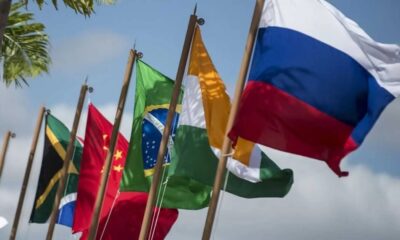
 Diplomacy2 weeks ago
Diplomacy2 weeks agoBRICS internal trade volume hits the $1 trillion mark
-

 Europe2 weeks ago
Europe2 weeks agoNew MI6 chief’s grandfather was a Nazi collaborator known as ‘The Butcher’
-
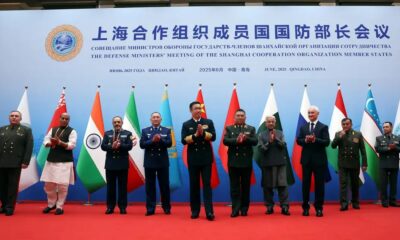
 Asia2 weeks ago
Asia2 weeks agoChina hosts SCO defense ministers on warship amid regional tensions
-

 Europe2 weeks ago
Europe2 weeks agoWeber warns against US dominance, urges European self-confidence
-
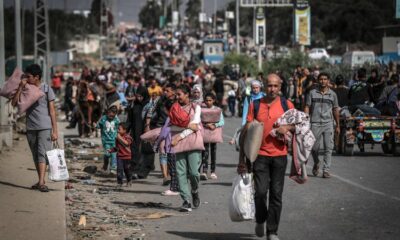
 Middle East3 days ago
Middle East3 days agoIsrael details plan for ‘humanitarian zone’ in Rafah, called a ‘concentration camp’ by critics
-
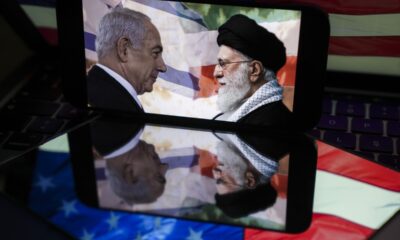
 Interview2 weeks ago
Interview2 weeks agoWho won the Israel-Iran war? Retired Rear Admiral Alaettin Sevim speaks to Harici
-

 America2 weeks ago
America2 weeks agoUS intelligence officials claim Iran’s nuclear facilities were destroyed
-
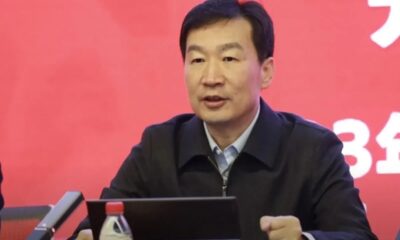
 Asia2 weeks ago
Asia2 weeks agoChinese navy chief and top nuclear scientist expelled from legislature




